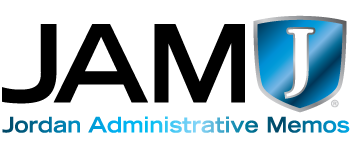Spring has arrived, and with it comes a sense of renewal and hope for a brighter future. As we move into the month of May, we have much to look forward to in our schools and within our community. Enjoy our newsletter as you learn about Asian and Pacific Island Heritage Month, gain some teaching tools to assist students in reading in a different language other than their native language, and celebrate our bilingual psychologists with us.
The full newsletter can be found at the link below. Stories include:
Student Monitoring - After students score proficient on their WIDA test, they are monitored for four years. If you have any students in monitoring, you will be asked to complete a monitoring form each quarter for them. This quick check-in allows you to communicate any concerns you might have with students who have exited EL services but who continue to be monitored for four years after their exit date. When you log into ELLevation, you will see a red flag above the "Monitoring" tab on your screen. This tells you how many forms you need to complete, and when you click, it will take you to your unfinished forms. Make sure you complete these before the year ends!
Immersive Reader in Canvas - The Immersive Reader is an add-on in Canvas that students can set up to help them understand your Canvas content. Immersive Reader will do the following:
- Translate text (show students how to do this--they'll have to adjust each time they open immersive reader) If they click a word, a picture will pop up
- They can adjust font size, background color, and have it highlight line-by-line reading.
- It will read text to them, can speed or slow audio, change audio to male/female voice, and has different dialects or accents students can choose.
- Here are the instructions for students to add it the Immersive Reader button to their Canvas page. It might be helpful to walk them through it by doing it on your own:
- Go to "Account" on left side of Canvas screen. Click "settings"
- Scroll down to the list of "Feature Options"
- Click the red X next to "Microsoft immersive reader," click "enabled," and turn it to a green check.
- Bonus: Students can also turn on auto-captions for Canvas Media in the "Feature Options" list
Culture Corner - May is Asian American and Pacific Islander (AAPI) Heritage Month, a time to celebrate and recognize the contributions and achievements of Asian Americans and Pacific Islanders in the United States. This month is an opportunity to learn about the rich history, diverse cultures, and significant contributions that AAPI individuals and communities have made throughout our country's history. It's a time to reflect on the challenges faced by AAPI people, including discrimination and racism, and to promote inclusivity, understanding, and respect for all individuals, regardless of their background. As a district community, let's take this month to celebrate the AAPI heritage and continue to work towards a more inclusive and equitable society.
Reflective Questions - As we end the year, think about the following:
- How can I build a stronger community that encourages and engages ALL students in my classroom?
- What went well this year? What do I want to improve?
- How can I use ELLevation in August to help me prepare for the new group of students I will teach?
- What can I do for me this summer that helps me decompress and relax after my busy teaching year?
- What can I plan for next year to help me support my and my student's social and emotional health as the year goes on?
Celebrating our Bilingual Psychs this year! - We have 747 ML's in our district who have IEP's. To help with testing, we have two wonderful bilingual psychologists working nonstop to help test our multilingual students throughout the district. Monica Amador and Angie Mar Velez Matias have had their busiest year yet trying to get students tested for special ed services.
They've tested nearly 300 students this year between the two of them. They do new student referrals and re-evals for students from out of district, state, or country. They are a valuable connection between Special Ed and Language and Culture, and we couldn't do it without them!
